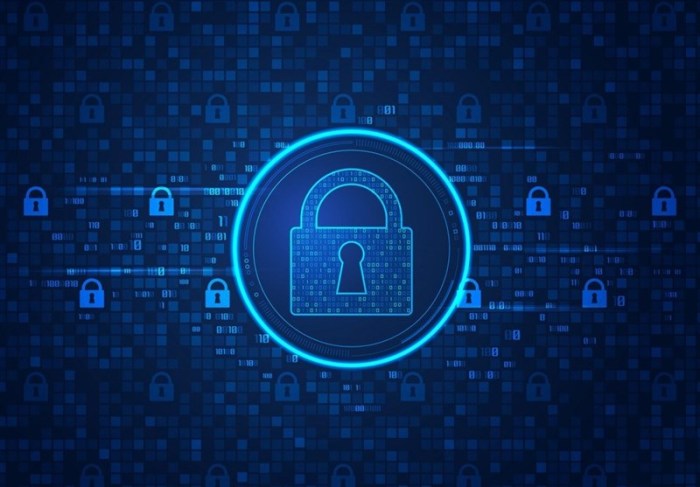
Ransomware protection tools are essential in today’s digital landscape, offering businesses and individuals the means to defend against increasingly sophisticated cyber threats. As ransomware attacks become more prevalent and damaging, the importance of utilizing robust protection measures cannot be overstated. Understanding these tools helps illuminate their critical role in safeguarding sensitive data and maintaining operational integrity.
In this discussion, we will explore the wide array of ransomware protection tools available, comparing free and paid solutions, and highlighting best practices for effective implementation. With insights into how these tools work and their significance in the broader context of cybersecurity, you will gain a comprehensive understanding of how to enhance your defenses against malicious attacks.
Ransomware Protection Tools Overview

Ransomware protection tools are essential components of cybersecurity strategies for both businesses and individuals. As ransomware attacks become increasingly sophisticated, the necessity for effective protection mechanisms grows. These tools help safeguard critical data and maintain operational continuity by preventing unauthorized access and data encryption by malicious actors.Various types of ransomware protection tools are available in the market, each designed to address unique security challenges.
Understanding the types of tools and their functionalities is vital to making informed decisions about cybersecurity investments.
Types of Ransomware Protection Tools
Ransomware protection tools can be categorized into several types, each serving distinct roles in defending against ransomware threats. The main categories include:
- Antivirus Software: These tools provide basic protection by detecting and eliminating known ransomware strains. They often include real-time scanning features and regular updates to combat new threats.
- Endpoint Protection Platforms (EPP): EPP solutions offer comprehensive security measures, integrating antivirus, anti-malware, and advanced threat protection tailored for corporate environments. They focus on monitoring endpoints to detect suspicious activities.
- Backup Solutions: Regularly backing up data can safeguard against ransomware attacks, allowing businesses and individuals to restore their systems without paying ransoms. Effective backup tools should include automated scheduling and off-site storage options.
- Network Security Tools: Firewalls and intrusion detection systems help protect networks by blocking unauthorized access and monitoring traffic for potential threats. These tools are crucial for preventing the initial infiltration of ransomware.
- Behavioral Analysis Tools: These advanced solutions use machine learning to analyze normal user behavior and detect anomalies that may indicate a ransomware attack in progress. They provide proactive protection by identifying threats before they can encrypt data.
Comparison of Free vs. Paid Ransomware Protection Solutions
When considering ransomware protection, businesses and individuals often face the choice between free and paid solutions. While both options have their merits, understanding their differences is essential.Free ransomware protection solutions can be appealing due to their no-cost nature, but they frequently come with limitations. Here are some considerations:
- Basic Features: Free tools may offer fundamental protection but often lack advanced features such as real-time monitoring, ransomware-specific defense mechanisms, and customer support.
- Limited Support: Users of free solutions may encounter challenges in receiving timely updates or technical assistance, leaving them vulnerable during critical situations.
- Frequent Updates: Some free tools may not provide regular updates, making them less effective against emerging ransomware variants.
In contrast, paid ransomware protection solutions generally provide enhanced security features and support. Key advantages include:
- Comprehensive Security: Paid solutions often come with a wider array of protection mechanisms that target specific ransomware behaviors, improving overall defense.
- Regular Updates: Subscription-based services typically offer ongoing updates to combat new ransomware strains, ensuring the user remains protected against evolving threats.
- Dedicated Support: Users benefit from professional technical support that can assist in the event of an attack, providing peace of mind and quick resolution strategies.
“Investing in robust ransomware protection tools is essential to defending against the growing threat landscape, as the cost of recovery can far exceed the price of prevention.”
The decision between free and paid solutions should depend on individual or organizational needs, risk assessments, and the criticality of the data involved. Effective ransomware protection is not just about having the right tools—it’s also about ensuring they are the right tools for the specific vulnerabilities faced.
Best Practices for Implementing Ransomware Protection

Effective ransomware protection requires not only the implementation of appropriate tools but also a strategic approach to ensure that these measures work effectively in safeguarding your data and systems. By following best practices, organizations can significantly reduce their risk of falling victim to ransomware attacks.A comprehensive plan for ransomware protection should include setting up the right tools, training employees, and maintaining regular updates.
Each component plays a critical role in creating a robust defense against potential threats. Below are essential practices to implement ransomware protection effectively.
Setting Up Ransomware Protection Tools
Organizing the installation and configuration of ransomware protection tools is crucial for their effectiveness. Here are steps to set up these tools properly:
1. Choose Reputable Software
Select well-reviewed ransomware protection tools with a proven track record in the industry. Many businesses opt for solutions like Bitdefender, Malwarebytes, or ESET.
2. Install on All Endpoints
Ensure that ransomware protection tools are installed on all devices within the organization, including servers, workstations, and mobile devices.
3. Configure Settings for Optimal Protection
After installation, configure the software settings according to your organization’s security policies. This includes enabling real-time scanning, automatic updates, and defining scanning schedules.
4. Backup Data Regularly
Implement a backup strategy that includes regular data backups to an offsite location. This allows for data recovery in case of a ransomware attack.
5. Test Recovery Plans
Regularly conduct simulations to test your data recovery plans and ensure that backups are functional and data can be restored quickly.
Training Employees to Recognize Ransomware Threats
Employees are often the first line of defense against ransomware attacks. Training staff to identify potential threats can significantly lower the risk of an incident. Consider the following strategies:
Conduct Regular Training Sessions
Schedule ongoing training that covers current ransomware trends, the importance of security, and how to recognize phishing attempts and other common attack vectors.
Simulate Phishing Attacks
Run simulated phishing campaigns to test employees’ awareness and response to suspicious emails. This practice can help identify gaps in training and reinforce lessons learned.
Provide Clear Guidelines
Create easy-to-follow guidelines outlining how employees should handle suspicious emails or files. Encourage them to report concerns immediately to the IT department.
Reward Security Awareness
Establish a recognition program that rewards employees for demonstrating strong cybersecurity practices, enhancing engagement and commitment to security protocols.
Checklist for Regular Updates and Maintenance
Maintaining ransomware protection tools requires a systematic approach to updates and maintenance. This checklist can help ensure that your tools are always effective:
Monthly Software Updates
Schedule monthly reviews to ensure that all security software is up-to-date, including patches and feature updates.
Regular Threat Assessments
Conduct quarterly assessments to identify any vulnerabilities in the current security setup, making necessary adjustments to tools and strategies.
Backup Verification
Monthly verification of backup integrity and accessibility, ensuring that data can be restored without issue.
User Access Reviews
Regularly review user access levels to ensure that only authorized personnel have access to sensitive data and systems.
Incident Response Drills
Conduct biannual drills to test the organization’s incident response plan and improve readiness for potential ransomware scenarios.
“An ounce of prevention is worth a pound of cure.”
Keeping these practices in mind will empower organizations to build a strong defense against ransomware threats, safeguarding both data and reputation.
Related Topics in Technology and Security
In today’s digital landscape, understanding the interconnections between various aspects of technology and security is crucial, particularly in the face of growing ransomware threats. The relationship between web hosting security, web design and development, and data communication plays a significant role in shaping a robust cybersecurity framework. Exploring these connections can help organizations better protect themselves against cyber threats.
Web Hosting Security and Ransomware Threats
Web hosting security is integral to safeguarding against ransomware attacks. Vulnerabilities in hosting environments can be exploited by cybercriminals to initiate attacks, leading to data breaches and financial loss. A few key points highlight the relationship:
- Compromised servers can serve as entry points for ransomware, enabling attackers to encrypt data and demand ransoms.
- Inadequate security measures, such as weak passwords and lack of updates, increase susceptibility to attacks.
- Hosting providers offering robust security features, like regular backups and DDoS protection, can minimize the impact of potential ransomware incidents.
By enhancing web hosting security, organizations can significantly reduce the risk of ransomware infiltration.
The Influence of Web Design and Development on Cybersecurity
The field of web design and development has a direct impact on cybersecurity. Poorly designed websites or applications can introduce vulnerabilities that attackers can exploit.Key considerations in this area include:
- Secure coding practices are essential to prevent common vulnerabilities such as SQL injection and cross-site scripting.
- User interfaces should incorporate security measures, like prompting users to create strong passwords and implementing two-factor authentication.
- Regular updates and audits of web applications help to identify and rectify security flaws before they can be exploited.
A proactive approach to web design and development can mitigate potential security risks and enhance overall resilience against cyber threats.
Significance of Data Communication in Preventing Cyber Attacks
Data communication plays a crucial role in cybersecurity, particularly in transmitting sensitive information securely between systems. Effective data communication protocols can greatly reduce the likelihood of cyber attacks.Several important aspects include:
- Encryption of data in transit ensures that sensitive information cannot be intercepted and misused by unauthorized entities.
- Utilizing secure communication channels, like HTTPS and VPNs, enhances the overall security of data exchanges.
- Implementing robust authentication methods and access controls further protects against unauthorized access during data transmission.
Investing in secure data communication practices is essential for organizations aiming to shield themselves from potential cyber threats.
Outcome Summary
In conclusion, ransomware protection tools are not just an option but a necessity for anyone looking to secure their digital assets. As threats evolve, so too must our strategies for defense. By understanding the available tools and implementing best practices, individuals and businesses can significantly reduce their risk and enhance their cybersecurity posture. Stay vigilant and proactive to ensure your data remains safe.
Commonly Asked Questions
What are ransomware protection tools?
Ransomware protection tools are software solutions designed to prevent, detect, and respond to ransomware attacks, safeguarding data from encryption and theft.
How do I choose the right ransomware protection tool?
Consider factors such as budget, ease of use, features, customer support, and whether you need a free or paid solution based on your specific needs.
Can free ransomware protection tools be effective?
Yes, free tools can offer basic protection, but they may lack advanced features and support, making paid solutions more reliable for comprehensive security.
How often should I update my ransomware protection tools?
It’s advisable to update your tools regularly, ideally at least once a month or as new updates are released, to ensure you are protected against the latest threats.
Do ransomware protection tools work against other malware?
Many ransomware protection tools include features that protect against various types of malware, but it’s best to use a comprehensive security suite for complete protection.




